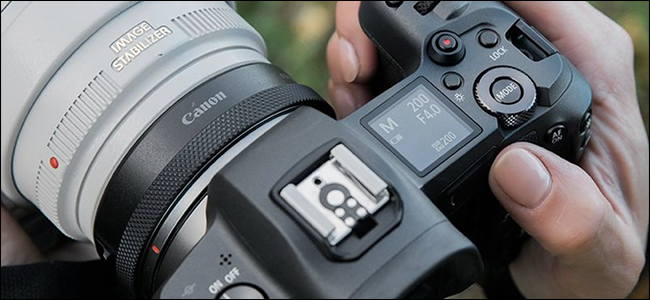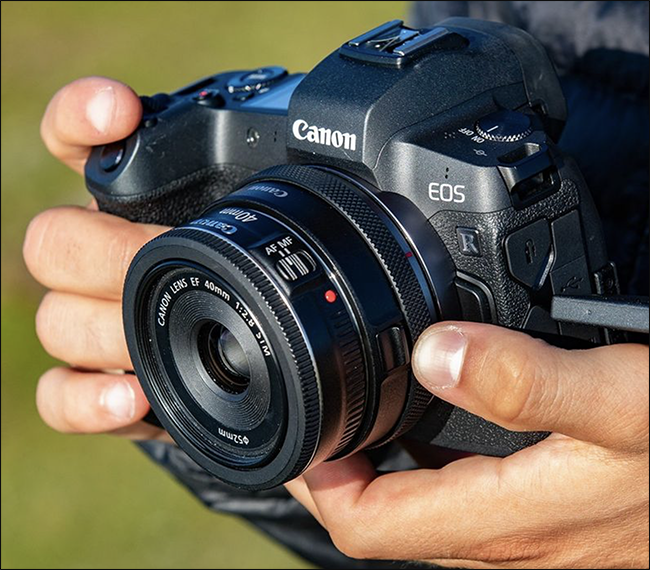
3d鏡頭 適配

Mirrorless cameras aren’t the future, they’re the present. If you’re switching from an older DSLR, though, the obvious thing to do is just buy an adapter so you can keep using your old gear.
無反光鏡相機不是未來,而是現在。 不過,如果您要從舊的DSLR切換到,則顯而易見的事情就是購買適配器,這樣您就可以繼續使用舊的設備。
鏡頭轉接器的優點 (The Advantages of a Lens Adapter)
The biggest advantage of lens adapters is pretty clear: they enable you to use your existing collection of lenses on your new camera. With many mirrorless cameras starting at over $1,000, anything that offsets the cost of switching is much appreciated. After all, mirrorless lenses cost as much as the new camera body.
鏡頭適配器的最大優勢非常明顯:它們使您能夠在新相機上使用現有的鏡頭系列。 由于許多無反光鏡相機的起價都在1,000美元以上,因此能夠抵消轉換成本的任何事物都倍受贊賞。 畢竟,無反光鏡鏡頭的價格與新相機的價格一樣。
For most photographers, simultaneously switching systems and replacing all their DSLR lenses with their mirrorless equivalents would cost more than they can justify spending.
對于大多數攝影師而言,同時切換系統并用無反光鏡的同等品替代其所有DSLR鏡頭所花費的成本超過其合理的花費。
So, as the upside of a lens adapter is pretty clear, are there any downsides?
因此,由于鏡頭適配器的優點很明顯,是否有缺點?
為什么需要鏡頭轉接器 (Why Lens Adapters Are Necessary)
Mirrorless cameras aren’t just DSLRs without the mirror—they’re a totally overhauled platform. Both Canon and Nikon took the opportunity to radically redesign their decades-old lens mounts, and with good reason. Canon debuted the EF mount in 1987, while Nikon’s F mount has been around since 1959.
無反光鏡相機不只是沒有反光鏡的數碼單反相機-它們是一個全面檢修的平臺。 佳能和尼康都趁機從根本上重新設計了它們已有數十年歷史的鏡頭卡口。 佳能于1987年推出了EF卡口,而尼康的F卡口自1959年以來就已面世。

The most noticeable change is that the lens mounts are now bigger, and the rear lens elements sit closer to the image sensor. Of course, the actual mount connection has changed, too.
最明顯的變化是鏡頭座現在更大了,后鏡頭元件更靠近圖像傳感器。 當然,實際的安裝連接也已更改。
This means lens adapters are necessary because the lens mounts on mirrorless cameras are entirely different from the DSLR mounts they succeed. Canon’s RF mount isn’t just an updated EF—it’s new.
這意味著鏡頭適配器是必需的,因為無反光鏡相機上的鏡頭座與成功的DSLR座完全不同。 佳能的RF卡口不僅是更新的EF,而且還是新的。
鏡頭轉接器增加了尺寸,重量和麻煩 (Lens Adapters Add Size, Weight, and Hassle)

Lens adapters add physical size and weight to your lenses. It’s not a huge amount, but if you’re buying a mirrorless camera because you want a smaller, lighter setup, this is something to consider. For example, Canon’s most basic EF-EOS R adapter adds an extra inch and four ounces to any lens you use. Nikon’s FTZ adapter adds a bit more weight and bulk because of its tripod mount.
鏡頭適配器可增加鏡頭的實際尺寸和重量。 這不是一個很大的數目,但是如果您要購買無反光鏡相機是因為您想要更小,更輕的設置,則需要考慮這一點。 例如,佳能最基本的EF-EOS R適配器為您使用的任何鏡頭增加了1英寸和4盎司。 尼康的FTZ適配器由于安裝在三腳架上而增加了重量和體積。
In addition to the size and weight penalty, a lens adapter is simply one more thing you have to remember to take with you on a shoot. If you forget it, you won’t be able to take any photos.
除了體積和重量上的損失外,鏡頭轉接器還只是拍攝時要記住的另一件事。 如果忘記了,將無法拍照。
相容性問題 (Compatibility Issues)
If you switch from a Canon DSLR to a Canon mirrorless camera, and also use a Canon lens adapter, things are pretty sweet. You should be able to use all your lenses happily. If not, though, things get a bit more complicated.
如果您從佳能數碼單反相機切換到佳能無反光鏡相機,并且還使用佳能鏡頭適配器,一切都會非常好。 您應該能夠愉快地使用所有鏡頭。 如果不是這樣,事情會變得更加復雜。
Even if you switch from a Nikon DSLR to a Nikon mirrorless camera, and use a Nikon lens adapter, there are some compatibility issues. Most newer lenses should be fine, as they have built-in autofocus motors. However, because the adapter doesn’t have one, Nikon’s AF and AF-D lenses are manual focus only.
即使從尼康DSLR切換到尼康無反光鏡相機并使用尼康鏡頭轉接器,也存在一些兼容性問題。 大多數較新的鏡頭都應該不錯,因為它們具有內置的自動對焦馬達。 但是,由于該適配器沒有一個,因此尼康的AF和AF-D鏡頭僅是手動對焦。
With some older lenses, there’s also no automatic aperture control, which means no electronic metering, automatic exposure modes, or EXIF data.
對于某些較舊的鏡頭,也沒有自動光圈控制,這意味著沒有電子測光,自動曝光模式或EXIF數據。
And that’s even if you stay with the same brand. If you want to mount a Nikon DSLR lens to a Canon mirrorless camera, you’ll need a pricey adapter to get even a fully manual experience.
即使您使用同一品牌,也是如此。 如果要將尼康DSLR鏡頭安裝到佳能無反光鏡相機上,則需要昂貴的適配器才能獲得完全手動的體驗。
With Canon, though, there are EF-to-other-brand adapters available for pretty much every platform. Photographer?Ken Rockwell even claimed he’s had better results using Canon’s DSLR lenses instead of Nikon’s on his Nikon mirrorless.
但是,有了佳能,幾乎每個平臺都可以使用EF至其他品牌的適配器。 攝影師肯·洛克威爾(Ken Rockwell)甚至聲稱,使用佳能的DSLR鏡頭比使用尼康無反光鏡的尼康鏡頭效果更好。
Put simply, though, just because an adapter exists doesn’t mean you’ll have an easy (or pleasant) time switching—especially if you’re mixing brands. Generally, cheaper adapters will give you only manual control. They can also prevent features like image stabilization from working.
簡而言之,僅因為存在適配器并不意味著您將有一個輕松(或愉快的)時間切換-特別是如果您混合使用品牌。 通常,便宜的適配器只會給您手動控制。 它們還可以防止圖像穩定等功能起作用。
Make sure you research the specific trade-offs you’ll have to accept before committing to a new system.
在提交新系統之前,請確保您研究了必須接受的具體折衷方案。
自動對焦可能會變慢 (Autofocus Might Be Slower)
DSLRs and mirrorless cameras autofocus?a bit differently. DSLRs have dedicated focus sensors, while mirrorless cameras generally rely on sensors built into the imaging sensor. Naturally, mirrorless lenses are designed to work with the focus on mirrorless cameras, while DSLR lenses are designed to work with DSLRs.
單反相機和無反光鏡相機的自動對焦有些不同。 DSLR具有專用的聚焦傳感器,而無反光鏡相機通常依賴于內置在成像傳感器中的傳感器。 自然地,無反光鏡鏡頭旨在與無反光鏡相機對焦,而單反相機鏡頭則設計用于與單反相機。
This means if you’re using a lens with an adapter, you might notice it autofocuses slower than it did on your DSLR or with an equivalent mirrorless lens. This is especially noticeable when you’re trying to focus on fast-moving subjects or action shots.
這意味著,如果您使用帶適配器的鏡頭,可能會發現它的自動對焦速度比DSLR或等效的無反光鏡鏡頭慢。 當您嘗試聚焦于快速移動的主體或動作鏡頭時,這一點尤其明顯。
Of course, it’s always ideal if you can replace your DSLR lenses with the equivalent mirrorless lenses for your new mirrorless camera. Unless you’ve got a lot of cash to burn, though, a lens adapter can definitely be a worthwhile trade-off.
當然,如果可以用與新無反光鏡相機相當的無反光鏡鏡頭替換DSLR鏡頭,那將永遠是理想的選擇。 但是,除非您有大量現金可以消耗,否則鏡頭轉接器絕對是一個值得權衡的選擇。
翻譯自: https://www.howtogeek.com/686190/should-you-use-a-lens-adapter-with-a-mirrorless-camera/
3d鏡頭 適配










)








